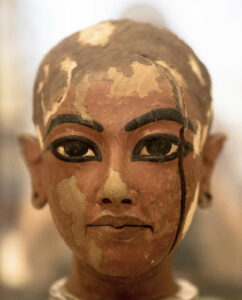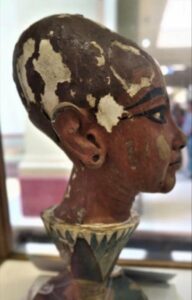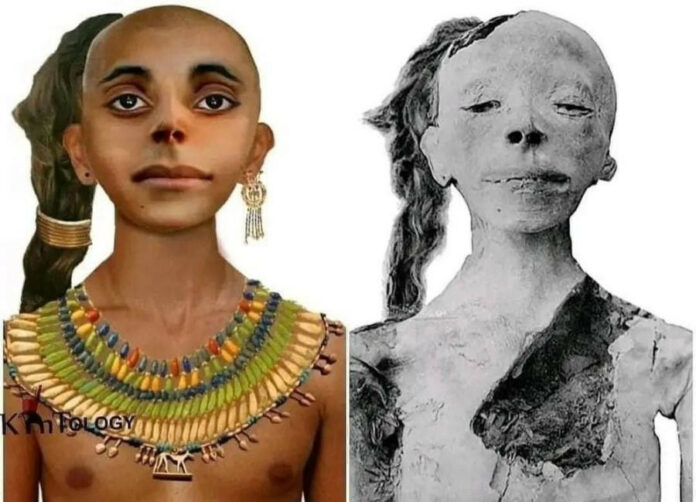In the annals of ancient Egyptian history, Tutankhamun, the last pharaoh of the 18th dynasty, has captured the imagination of people worldwide. His father, Pharaoh Akhenaten, was believed to be the mummy found in the KV55 tomb, adding to the intrigue surrounding this royal family.

The Head of Nefertem: A Glimpse into Tutankhamun’s Childhood
A remarkable discovery was made in Tutankhamun’s tomb (KV62) in the Valley of the Kings in West Thebes – a wooden sculpted head, known as the Head of Nefertem. This exquisite piece of art depicts the young King as a child, offering a rare glimpse into his early years.

The Symbolism Behind the Sculpture
The Head of Nefertem portrays Tutankhamun as the god of the dawning sun, Nefertem. This divine representation holds deep symbolic meaning:
The Blue Lotus: A Symbol of Revival

In the sculpture, the child-god Nefertem emerges from a blue lotus, a flower associated with the revival of the Sun each morning. The lotus buds close at night and reopen at dawn, mirroring the Sun’s daily cycle.
The Primordial Waters: The Origin of Creation
The blue base of the bust symbolizes the primordial waters from which the sun rose at the beginning of creation. This imagery connects the young pharaoh to the very origins of life and the universe.
The Pharaoh and the Sun: A Magical Guarantee of Rebirth
The depiction of Tutankhamun as Nefertem, a solar deity, was meant to magically guarantee the Pharaoh’s rebirth, just as the Sun is reborn each dawn. This powerful symbolism emphasizes the eternal nature of the pharaoh’s rule and his connection to the divine.
A Testament to Ancient Egyptian Artistry
The Head of Nefertem stands as a testament to the incredible artistry and craftsmanship of the ancient Egyptians. This 18th Dynasty sculpture not only provides insight into the life of a young prince but also showcases the deep symbolism and spiritual beliefs that permeated ancient Egyptian culture.

As we continue to unravel the mysteries surrounding Tutankhamun and his family, discoveries like the Head of Nefertem remind us of the enduring legacy of this fascinating civilization.

